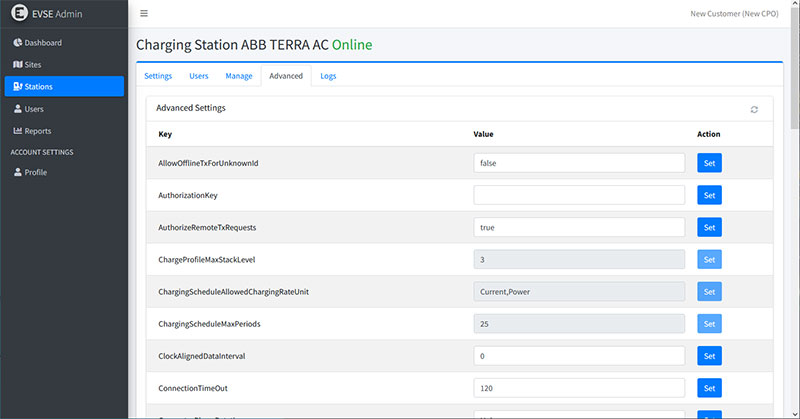As the demand for electric vehicles (EVs) continues to rise, managing the power consumption of EV charging stations has become more critical than ever. Open Charge Point Protocol (OCPP) Charging Profiles are essential tools for optimizing energy usage, controlling costs, and ensuring a balanced distribution of electricity across charging stations. In this article, we’ll explore the concept of OCPP Charging Profiles, their purpose, types, and how they can be applied in various scenarios.
What are OCPP Charging Profiles?
OCPP Charging Profiles are configuration settings that allow a central system (like an EV charging management platform) to control the charging behavior of one or more charging stations. These profiles help regulate the flow of energy to electric vehicles, ensuring that power is used efficiently and in alignment with grid capacities, user preferences, and cost-saving strategies.
Charging profiles are highly flexible and can be customized to fit different situations, such as peak and off-peak hours, renewable energy availability, and specific user needs.
Purpose of Charging Profiles
The main purposes of OCPP Charging Profiles include:
- Optimizing Energy Usage: Charging profiles can reduce energy waste by limiting or controlling the amount of power supplied to charging stations based on current demand or grid capacity.
- Cost Management: By setting time-based charging profiles, operators can take advantage of lower electricity rates during off-peak hours and avoid high costs during peak hours.
- Load Balancing: Charging profiles ensure that power is distributed evenly across multiple charging stations, preventing grid overload and ensuring efficient energy use.
- Smart Charging: Integrating renewable energy sources or dynamic pricing models can make charging more sustainable and economical. Charging profiles can control when and how much renewable energy is used for EV charging.
Types of Charging Profiles
Charging profiles in OCPP can be classified into several types based on the scope of their application. The most common types include:
- Charging Station Profiles:
- These profiles are applied directly to individual charging stations, controlling how much power each station can supply to vehicles. This is useful when a specific station needs to limit its output to avoid overloading the electrical grid.
- Transaction Profiles:
- These profiles control the behavior of a charging session for a specific user or vehicle. They apply from the start of the transaction to its completion, ensuring that power supply is aligned with user-defined settings, such as limiting the session duration or total energy delivered.
- Grid Profiles:
- Grid profiles help align the charging station’s power consumption with the broader needs of the electrical grid. These profiles adjust charging based on factors like grid demand or dynamic pricing, which can fluctuate throughout the day.
- Stacked Profiles:
- OCPP supports stacking multiple profiles for a single charging station. For example, you can apply a base station profile to limit total power and add a transaction profile for a specific session. The profiles can work together, following a hierarchical structure to prioritize certain conditions.
Scope of Application
OCPP Charging Profiles can be applied in several contexts, including:
- Residential Charging:
- Charging profiles allow homeowners to schedule charging sessions to align with off-peak electricity rates, saving money on energy bills. Profiles can also help manage the power usage when multiple EVs are charging in a home environment, preventing overloading the home’s electrical system.
- Commercial and Public Charging Stations:
- In commercial and public settings, charging profiles are essential for managing energy usage across multiple charging stations. Operators can apply load-balancing profiles to prevent grid overload during peak times and adjust power delivery dynamically based on demand.
- Fleet Management:
- Fleet operators can use charging profiles to ensure that vehicles are charged efficiently while minimizing energy costs. For example, fleet managers can create profiles to charge vehicles overnight during off-peak hours or ensure that only a set amount of energy is delivered to each vehicle.
- Smart Grid Integration:
- As part of the larger smart grid ecosystem, charging profiles play a critical role in managing the interaction between EVs and the electrical grid. Profiles can adjust charging based on grid demand, dynamic pricing, or the availability of renewable energy, ensuring optimal energy usage while supporting grid stability.
Conclusion
OCPP Charging Profiles are a powerful tool for managing energy consumption, reducing costs, and ensuring that EV charging is efficient and sustainable. Whether used in residential, commercial, or fleet environments, these profiles give operators the flexibility to control charging behavior and adapt to changing energy demands. As the EV ecosystem continues to grow, the ability to manage charging through profiles will become an increasingly important part of maintaining a balanced and efficient energy grid.

